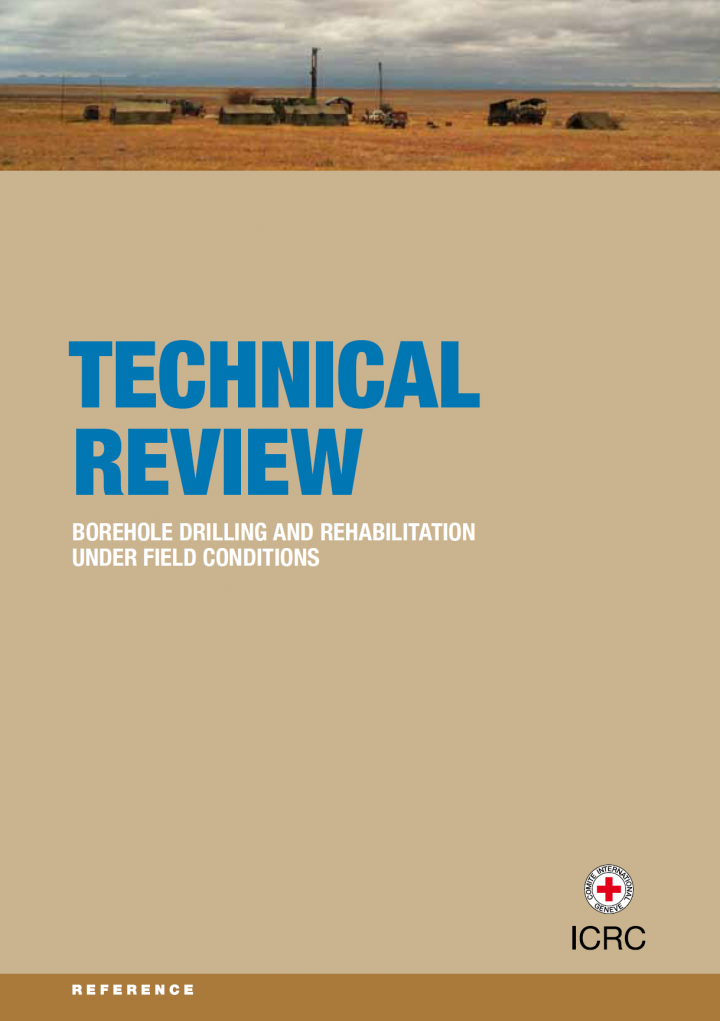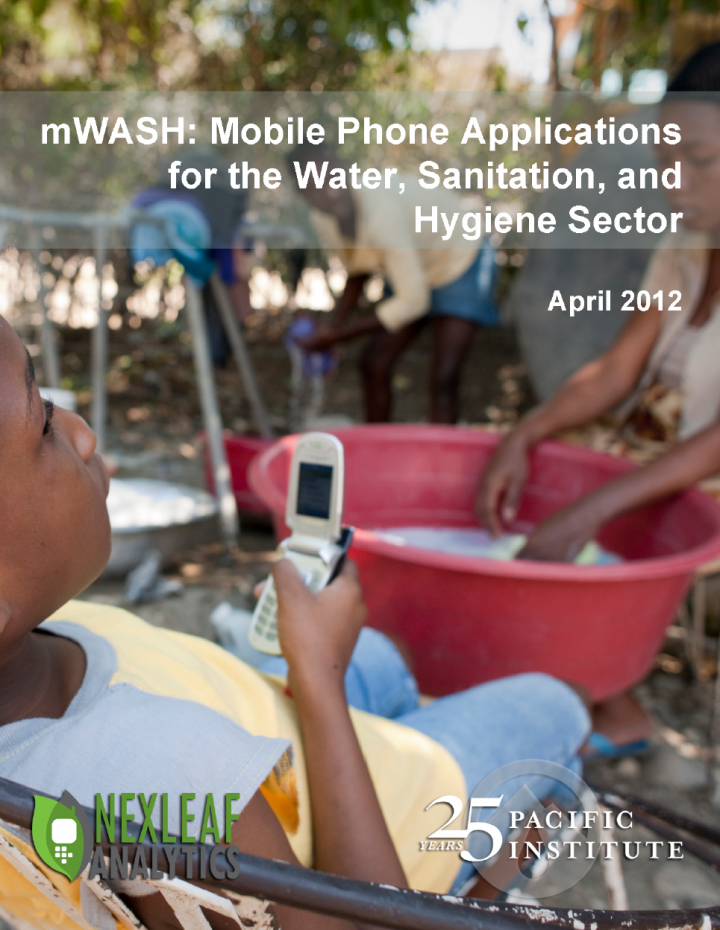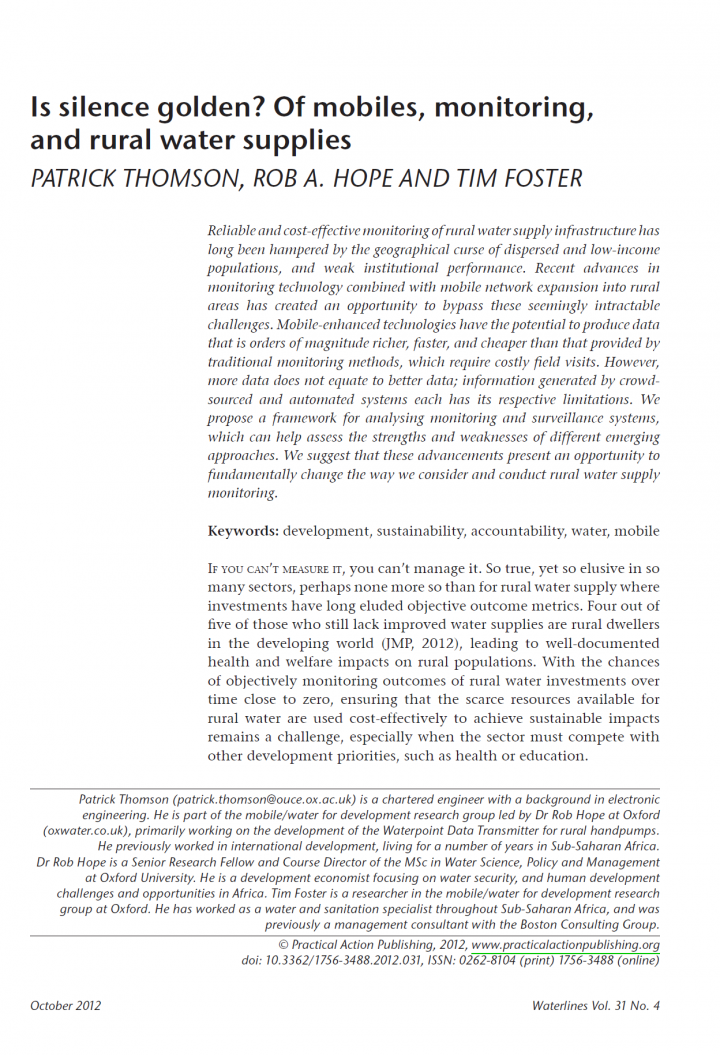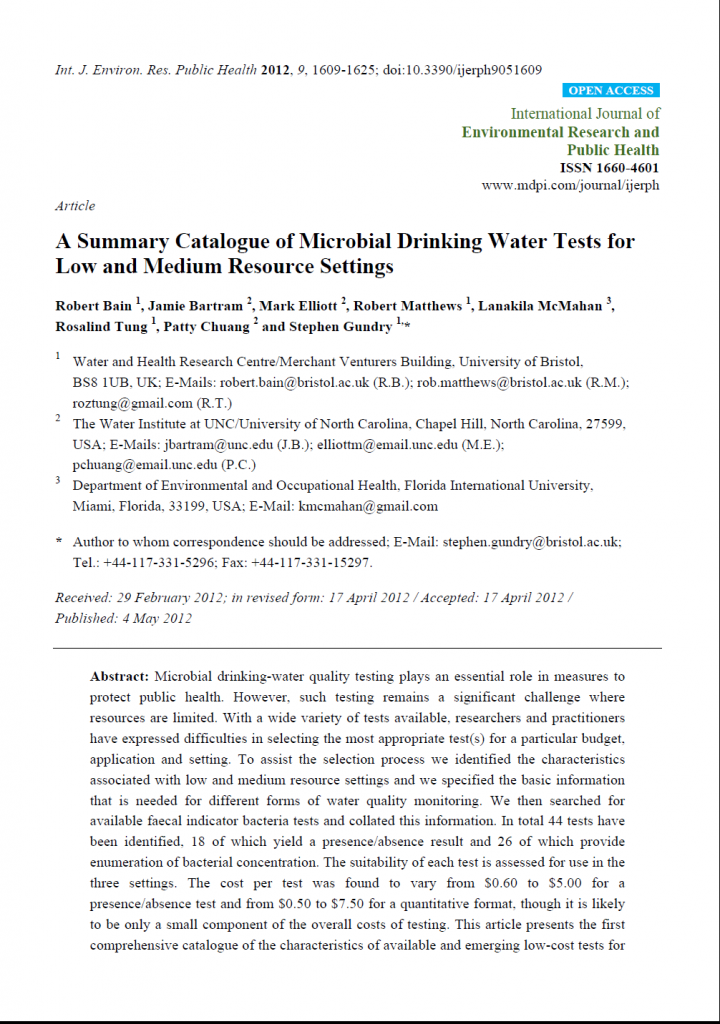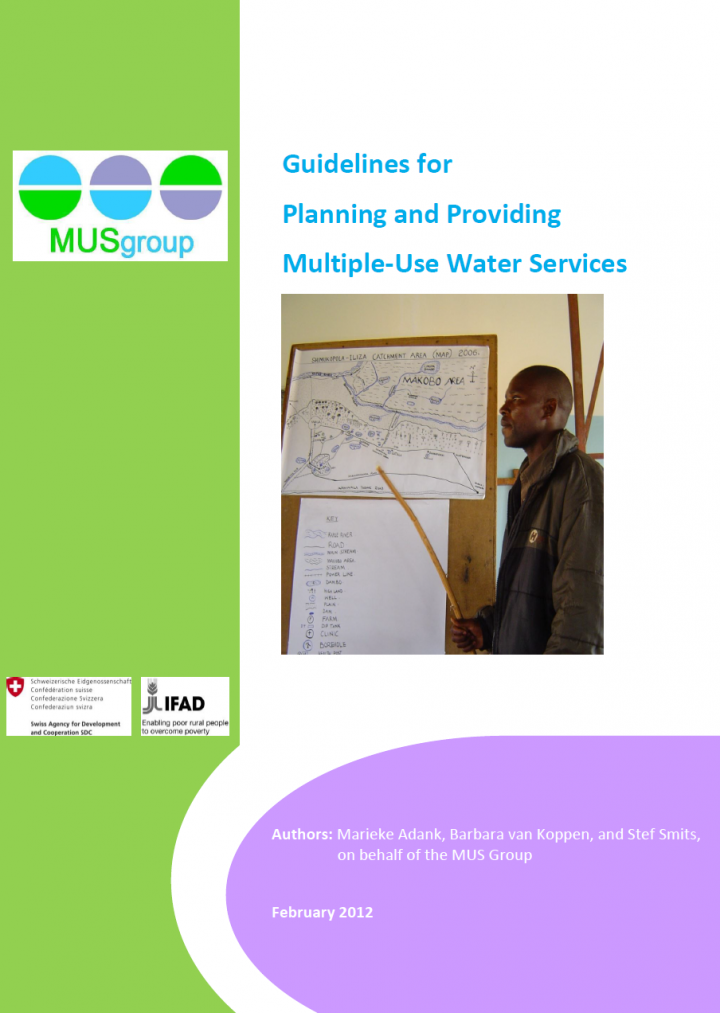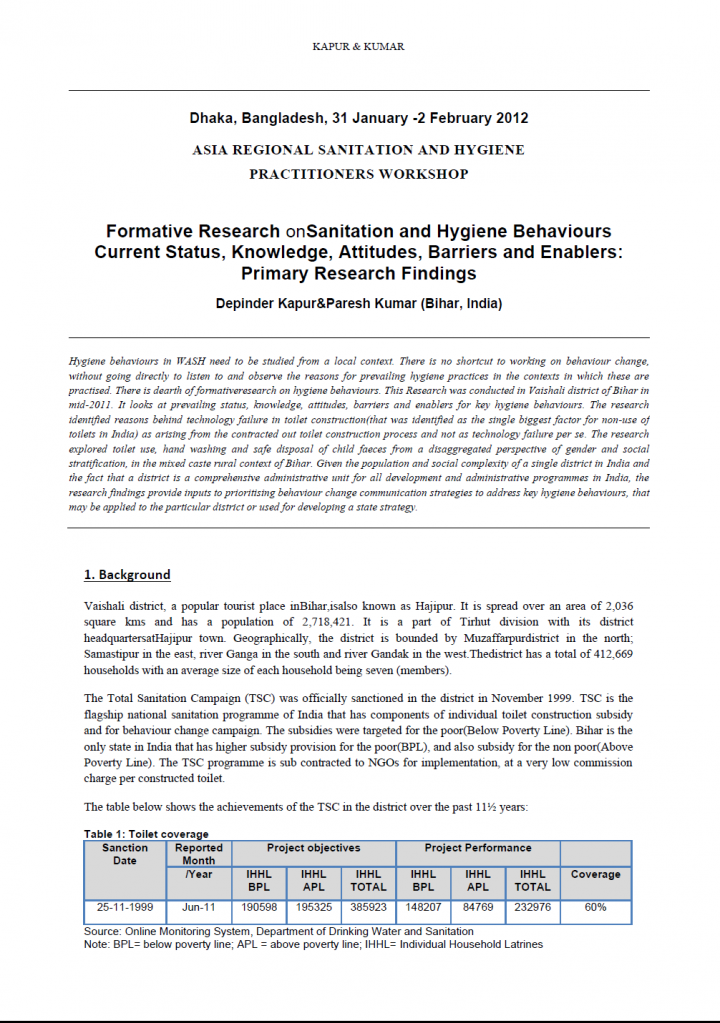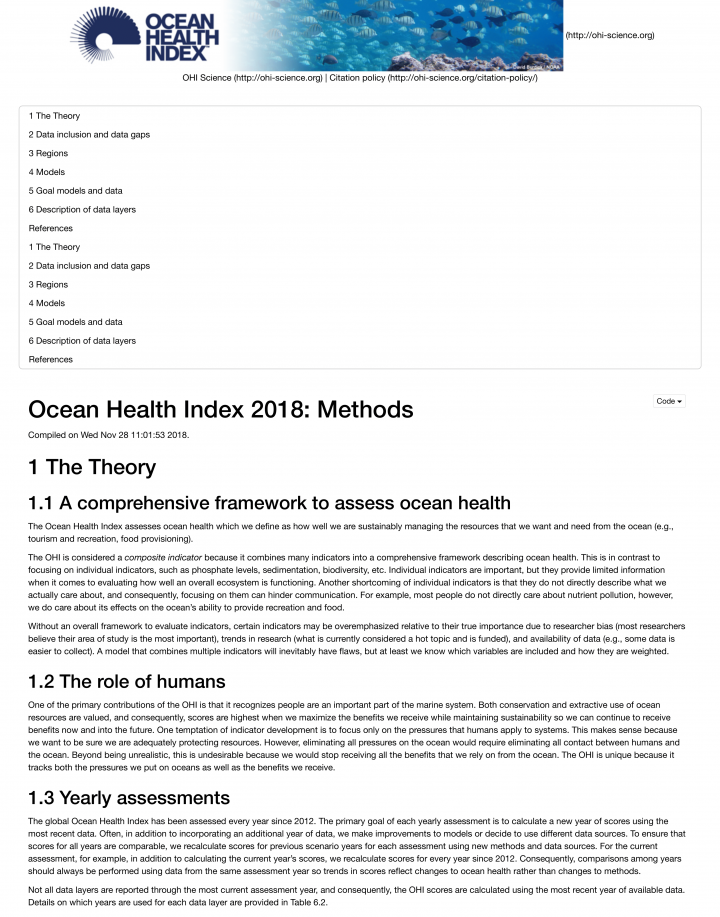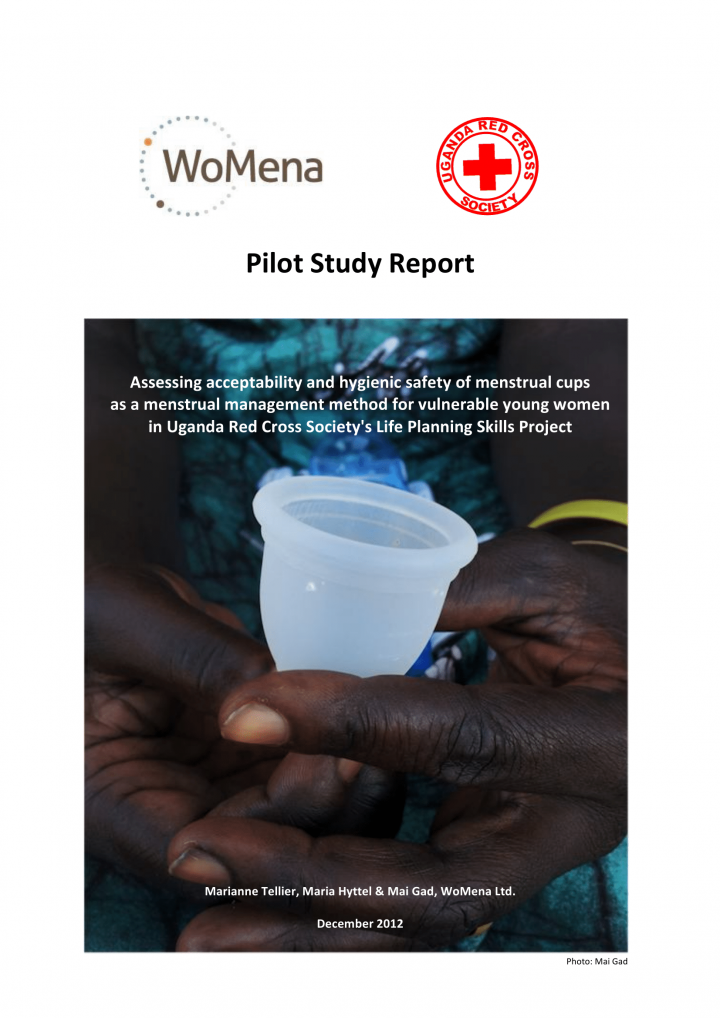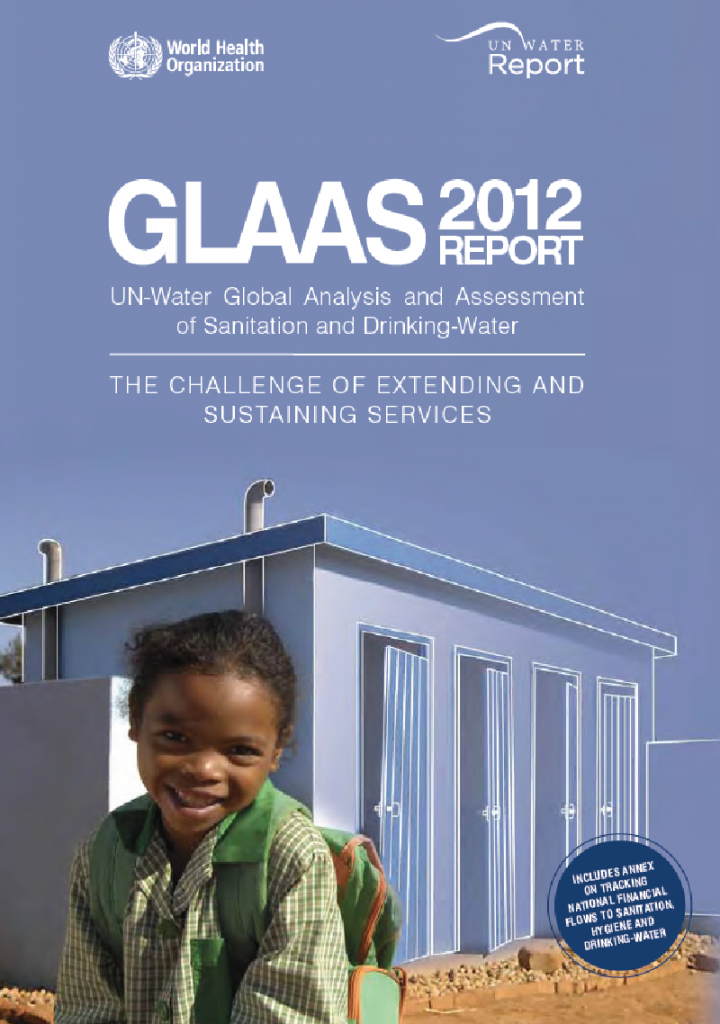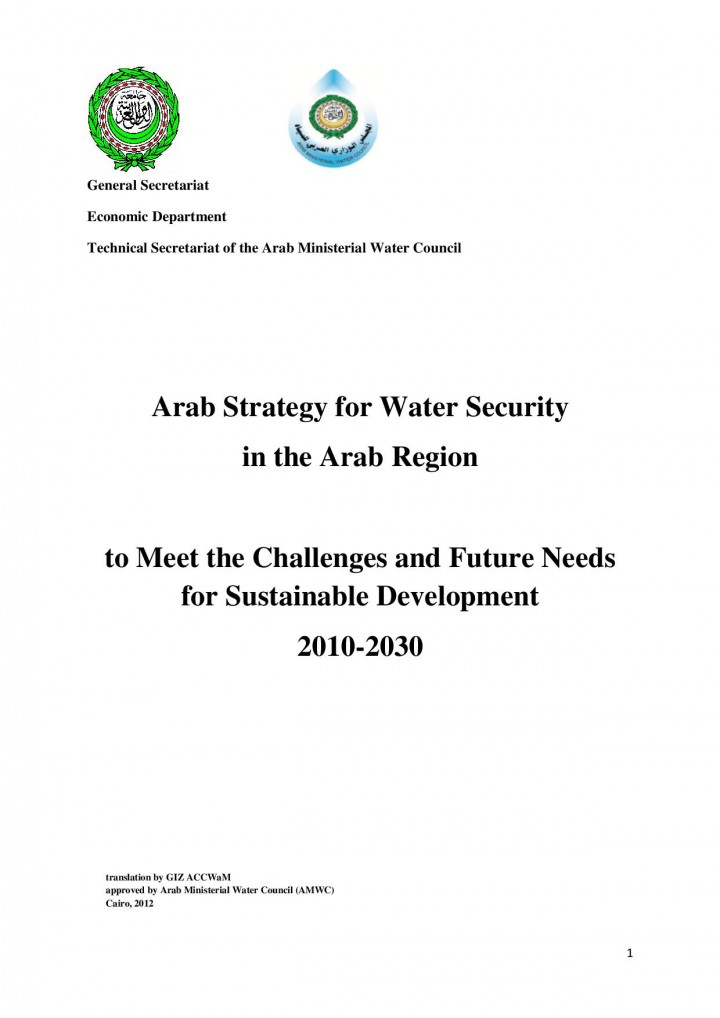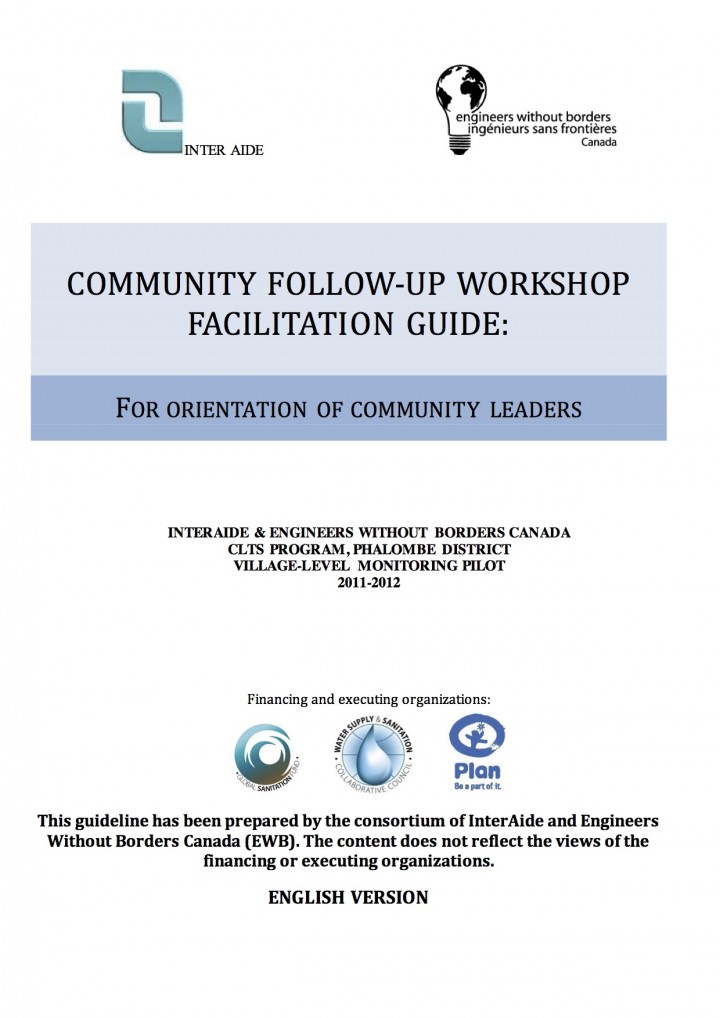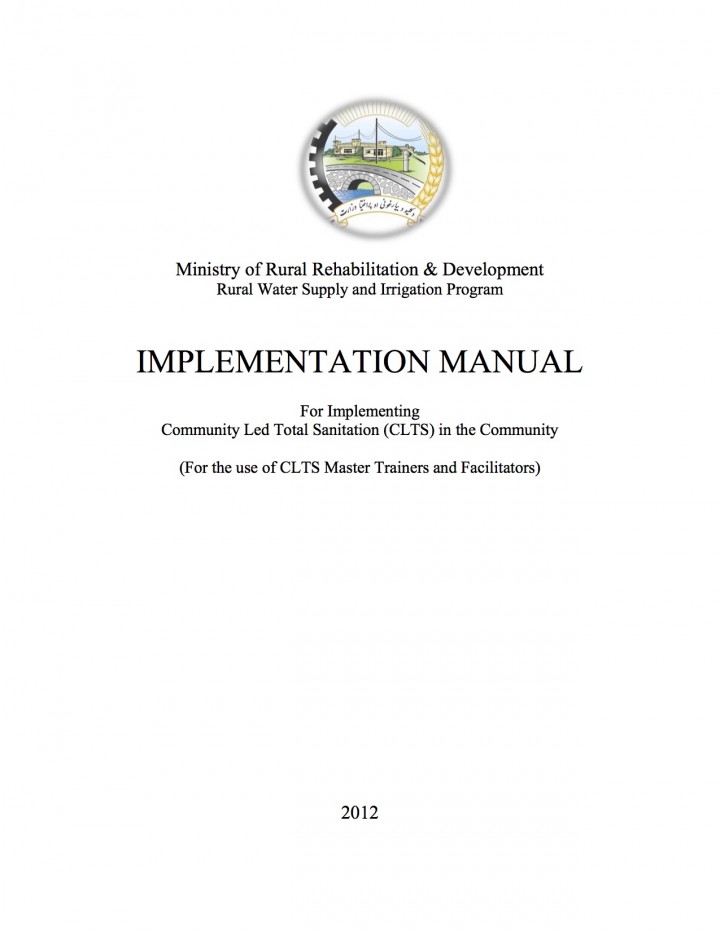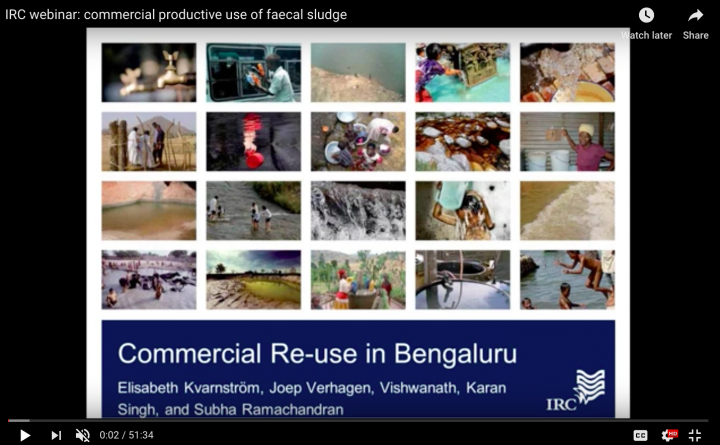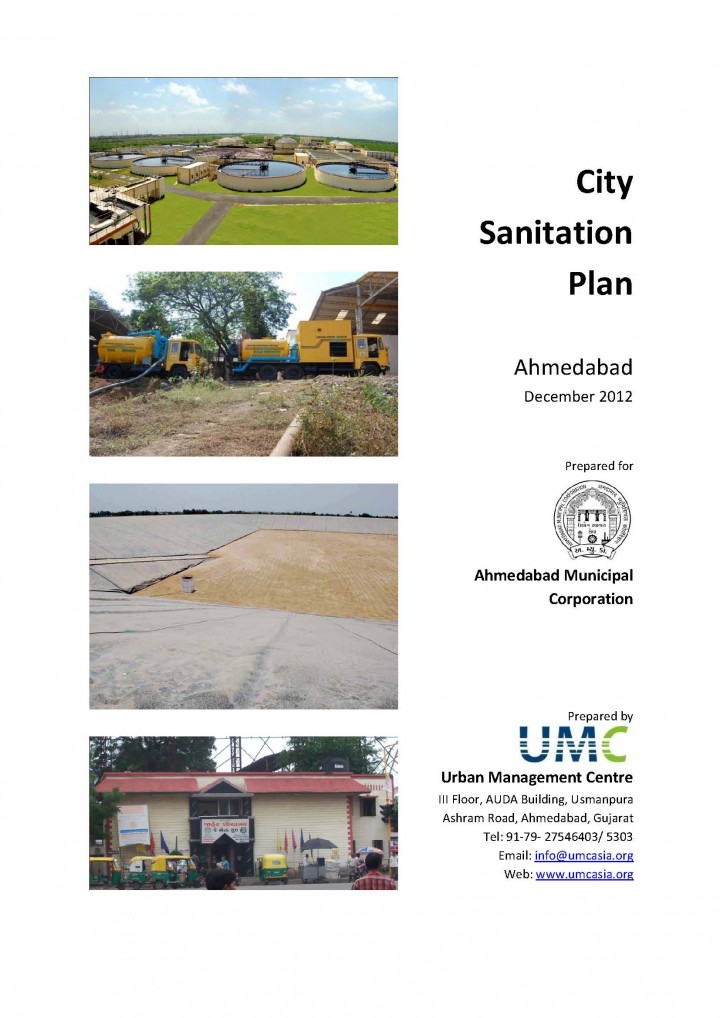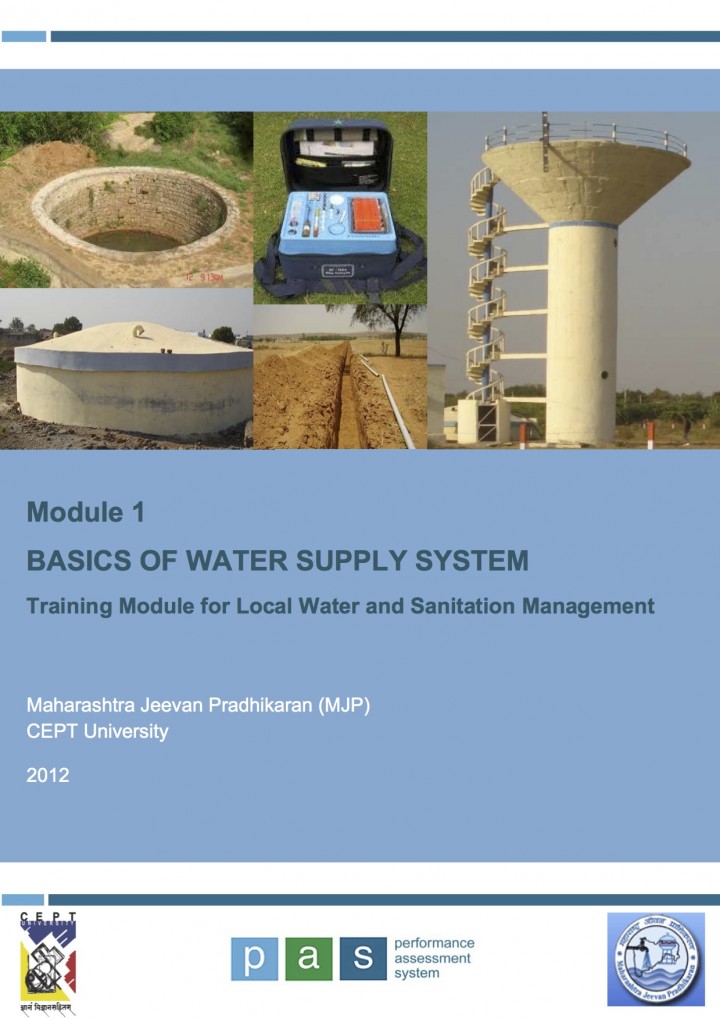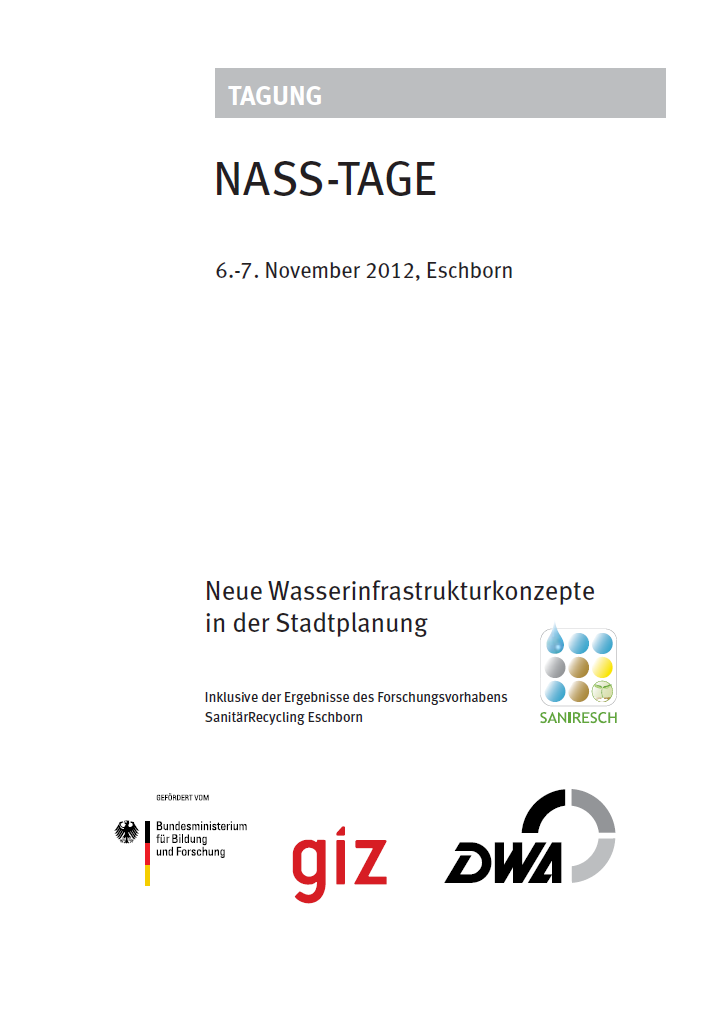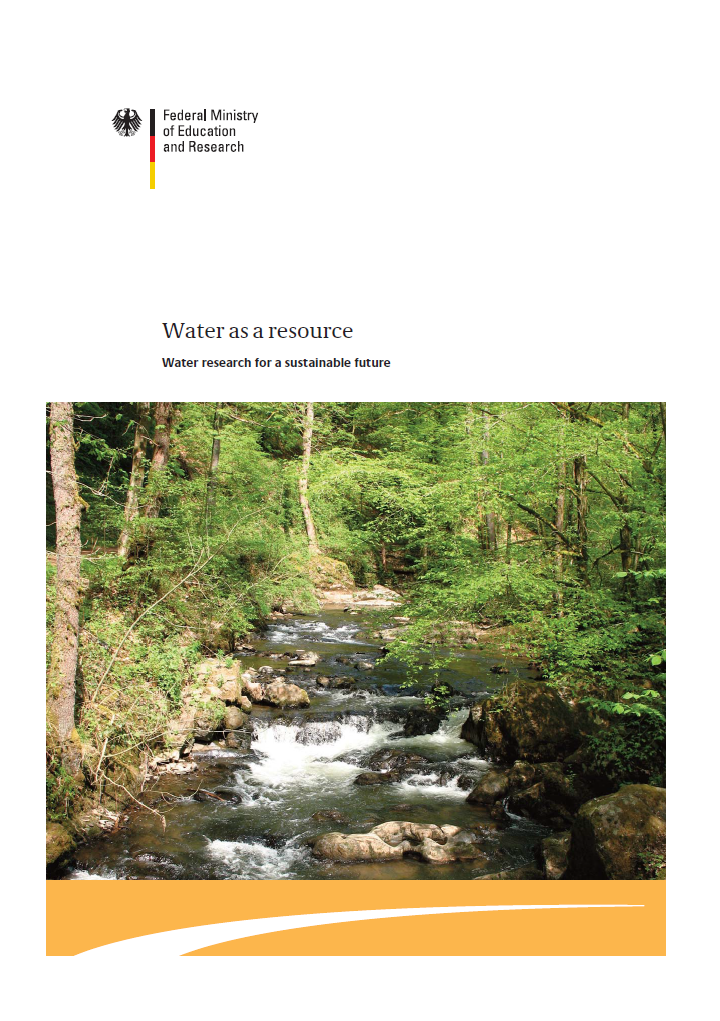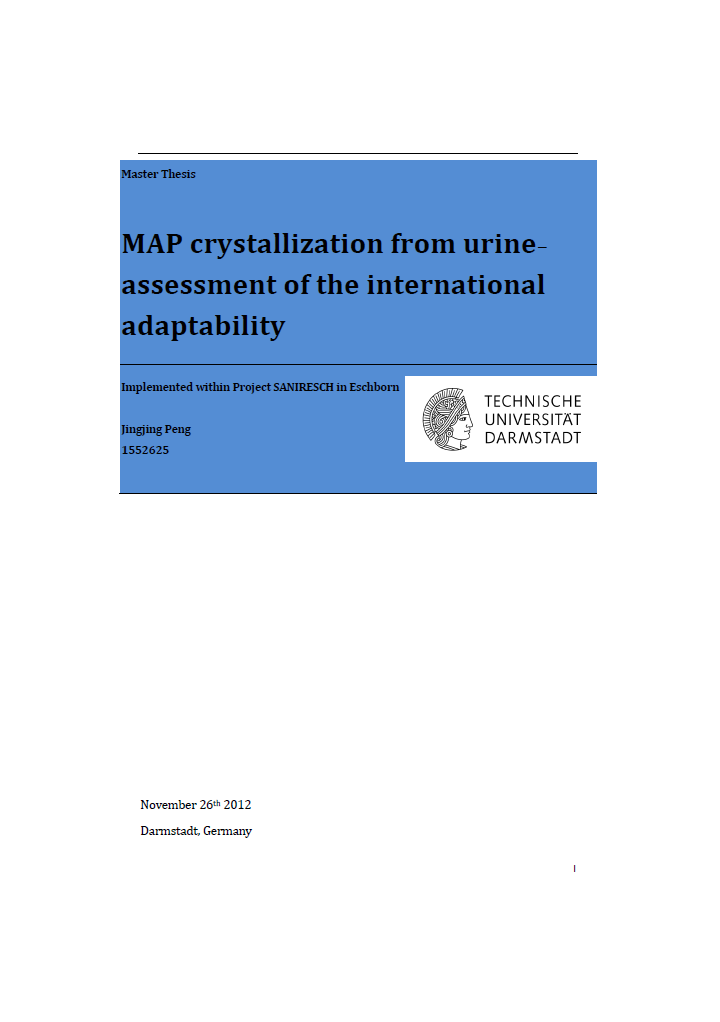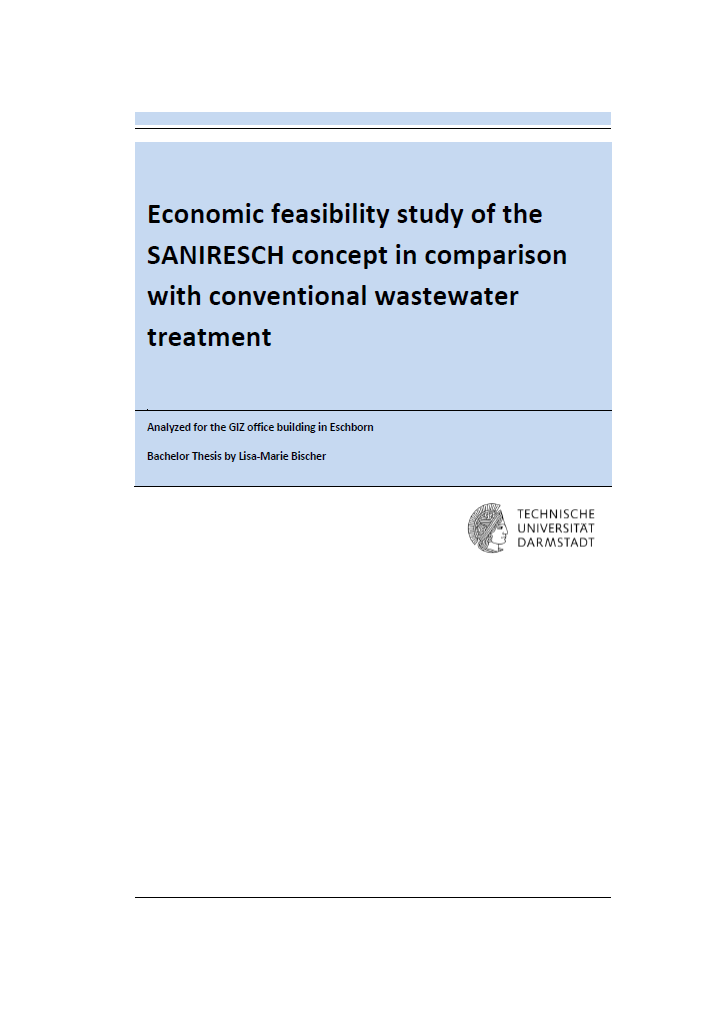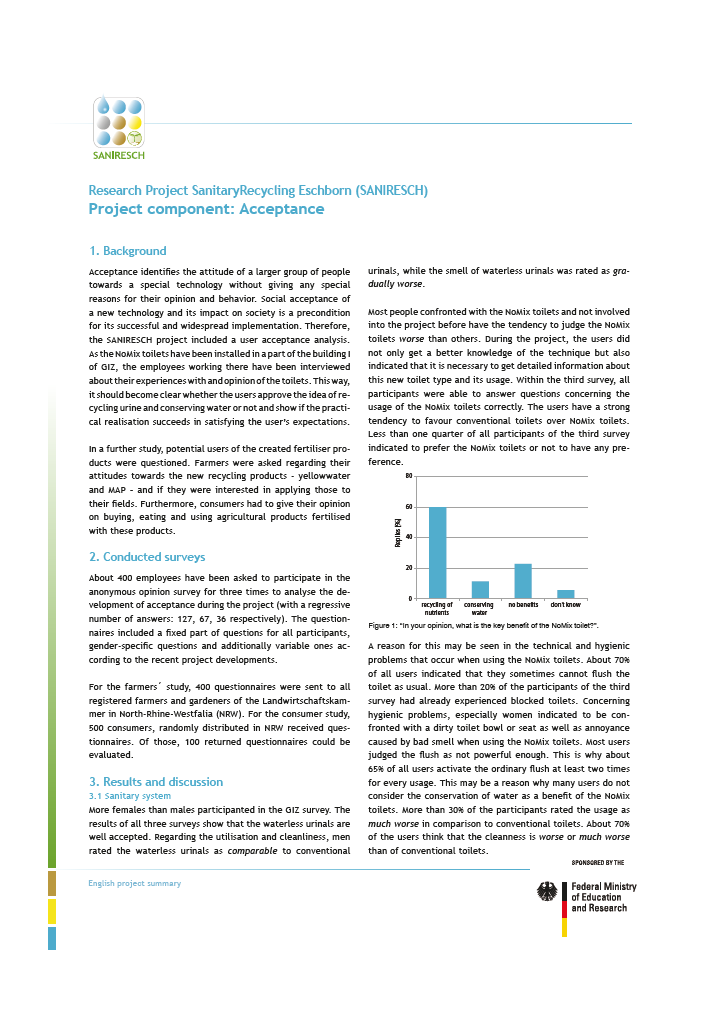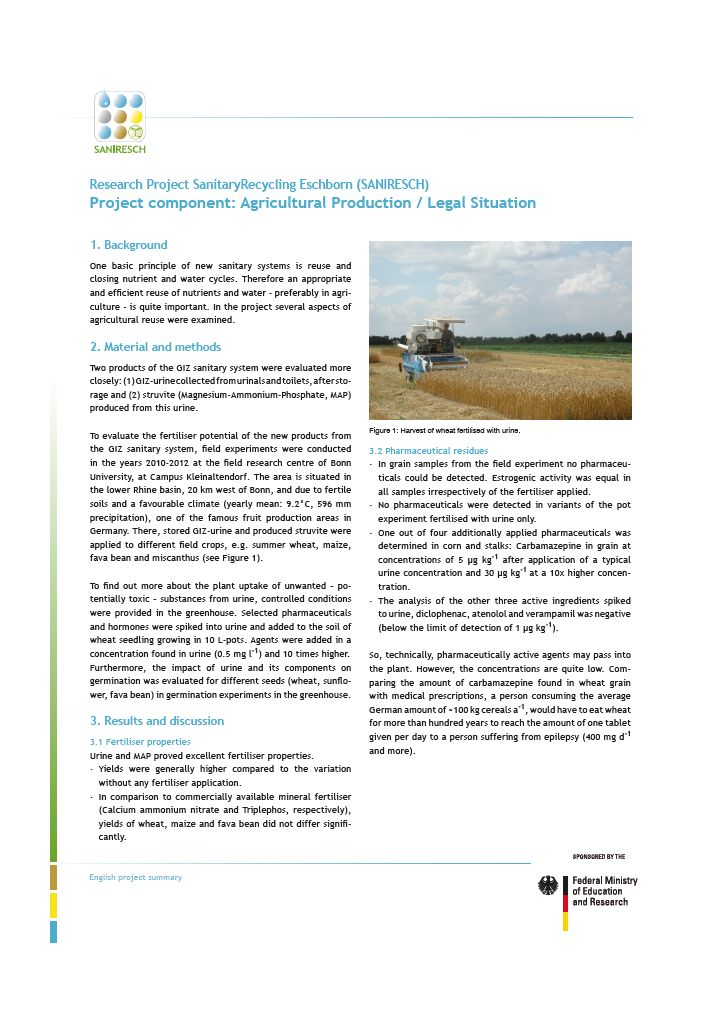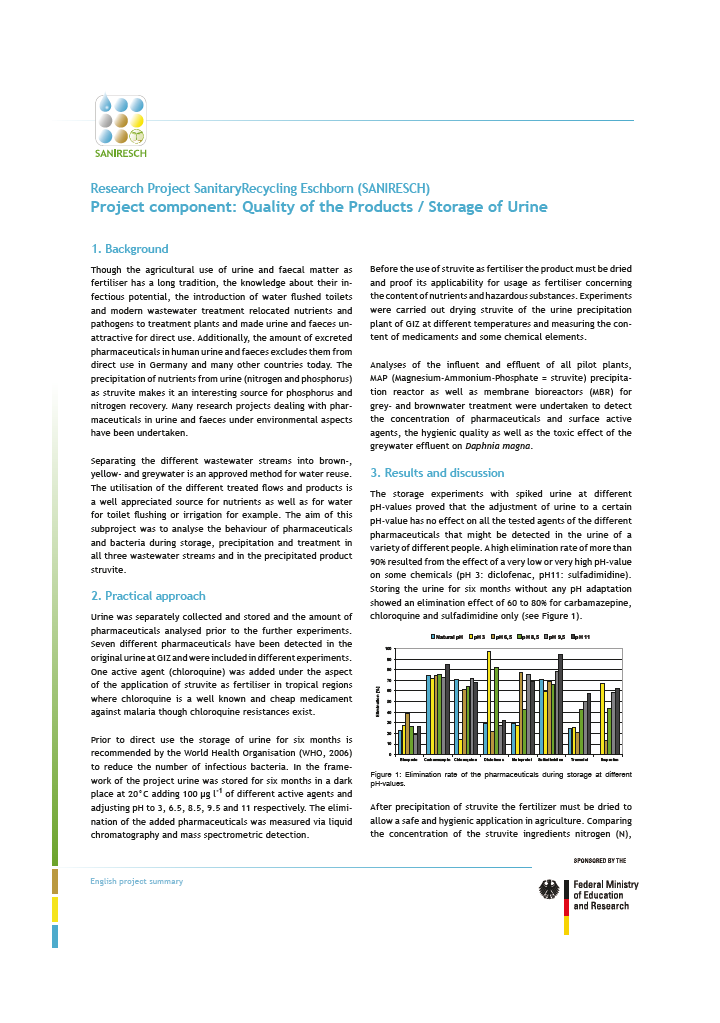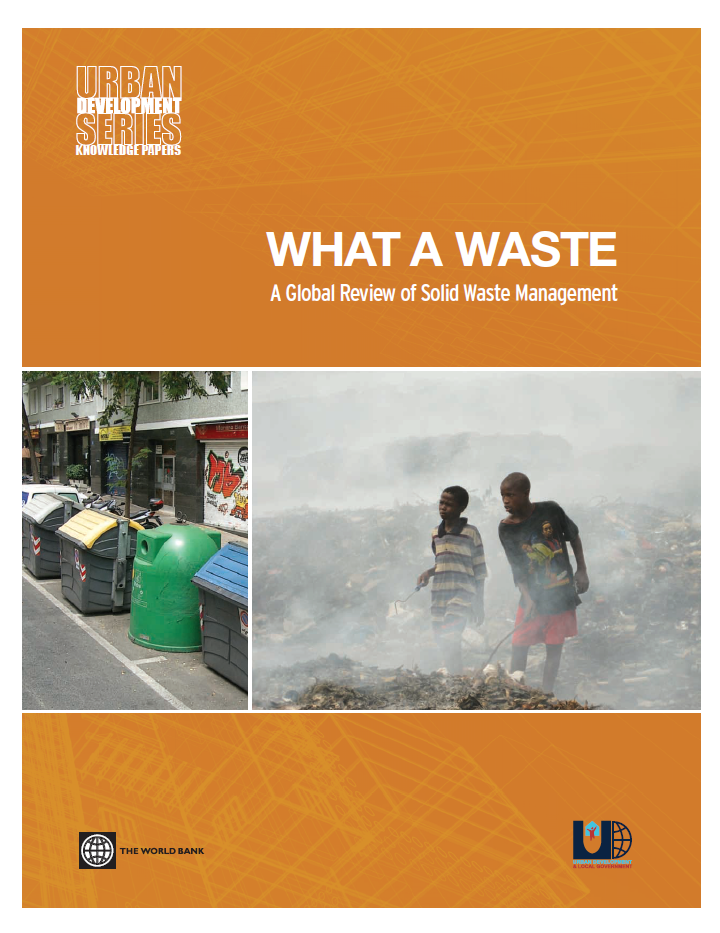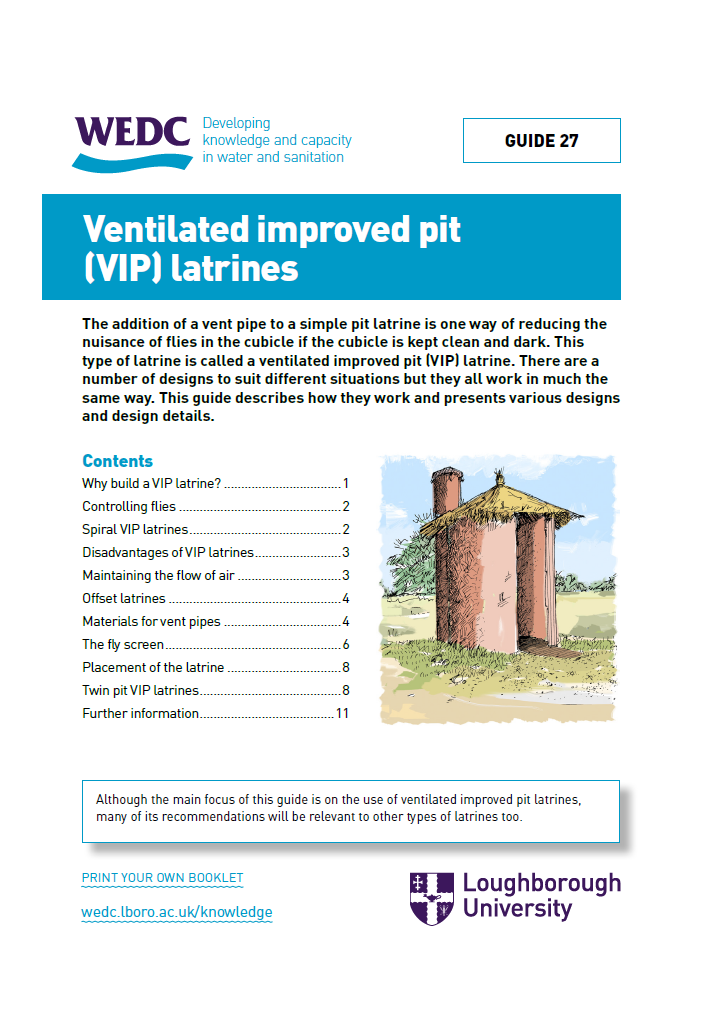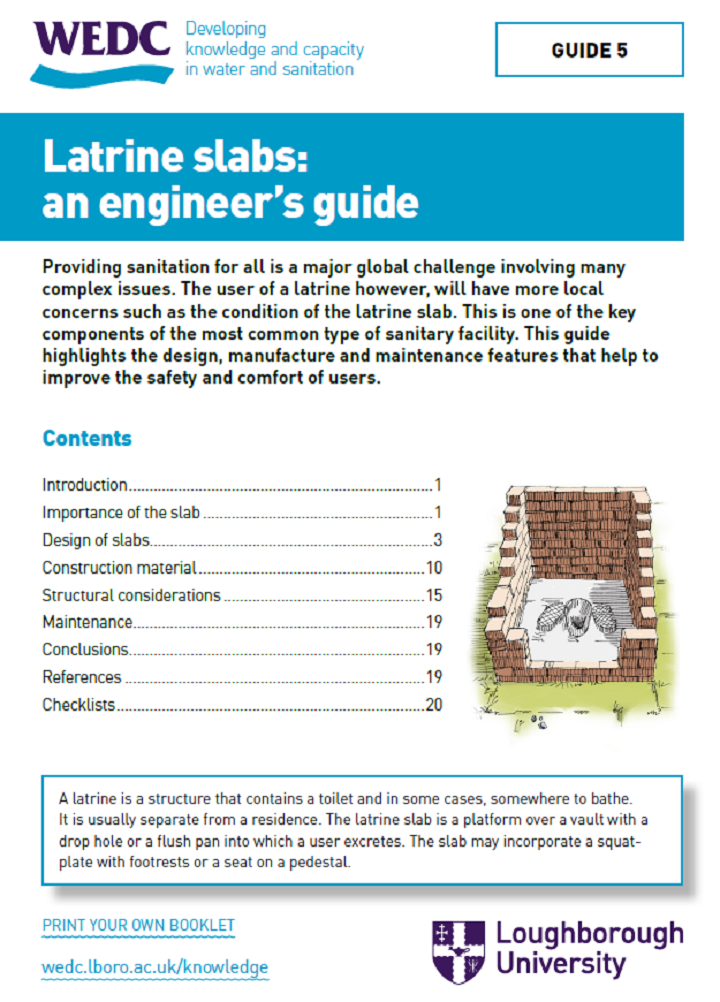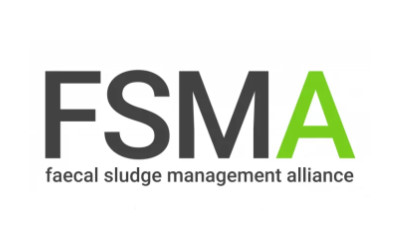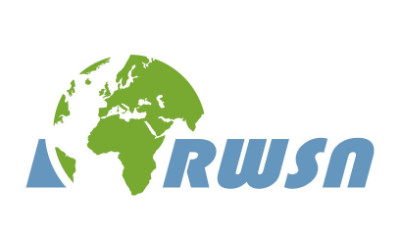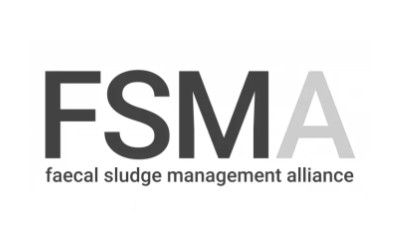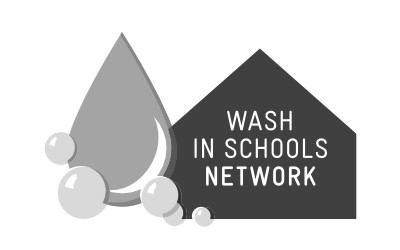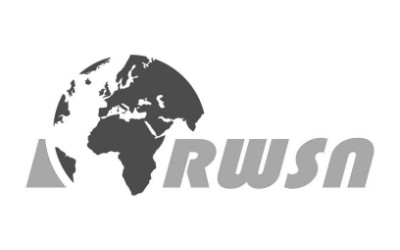Searching for information on Sanitation Workers?
The Sanitation Workers Knowledge + Learning Hub is the best source for all current news, trends, articles and updates on sanitation workers rights around the world.
Boreholes are one of the best means of obtaining clean water in field conditions. However, constructing, or repairing, boreholes requires specialized knowledge and technical expertise, much of which can be gained from the standard literature; but field operations in remote areas or in difficult conditions often require flexibility and imagination in avoiding and solving technical problems. This …
A large number of the billions of people who lack basic access to safe water and sanitation can count a mobile phone as one of their few possessions. Year after year, global and national institutions struggle to provide growing populations with basic water and sanitation needs, while mobile phones have become ubiquitous in the developing world. The spread of mobile phones has greatly reduced the …
Reliable and cost-effective monitoring of rural water supply infrastructure has long been hampered by the geographical curse of dispersed and low-income populations, and weak institutional performance. Recent advances in monitoring technology combined with mobile network expansion into rural areas has created an opportunity to bypass these seemingly intractable challenges. Mobile-enhanced …
Microbial drinking-water quality testing plays an essential role in measures to protect public health. However, such testing remains a significant challenge where resources are limited. With a wide variety of tests available, researchers and practitioners have expressed difficulties in selecting the most appropriate test(s) for a particular budget, application and setting. To assist the selection …
The multiple-use water services (MUS) approach is defined as an approach to water services that
considers the multiple needs of (poor) water users, who take water from a number of sources, and
communities’ own priorities as the starting point for investments in new infrastructure,
management arrangements, the rehabilitation of existing infrastructure, or for improvements in
management …
Hygiene behaviours in WASH need to be studied from a local context. There is no shortcut to working on behaviour change, without going directly to listen to and observe the reasons for prevailing hygiene practices in the contexts in which these are practised. There is dearth of formativeresearch on hygiene behaviours.
The OHI is considered a composite indicator because it combines many indicators into a comprehensive framework describing ocean health. This is in contrast to focusing on individual indicators, such as phosphate levels, sedimentation, biodiversity, etc. Individual indicators are important, but they provide limited information when it comes to evaluating how well an overall ecosystem is …
Study objectives: The objectives of this study were to assess young girls and women’s acceptability, suitability and hygienic safety of using menstrual cups in Uganda, when introducing cups through the Uganda Red Cross Society (URCS) Life Planning Skills (LPS) project framework. In the long-‐term, this is intended to support the formulation and implementation of policies and programs aimed …
This second UN-Water GLAAS report presents data received from 74 developing countries, covering all the Millennium Development Goal regions, and from 24 external support agencies, representing approximately 90% of official development assistance for sanitation and drinking-water.
1. Sections 1 and 2 of the report describe the efforts of countries to be accountable and to plan and coordinate …
The Arab Strategy for Water Security encapsulates the joint Arab approach to achieving sustainable development. It is a long-term program and practical mechanism for overcoming known future challenges in water resources development and management in the Arab Region. These resources are characterized by scarcity, disparate geographic distribution and increasing competition for utilization. In …
This manual is meant to act as a guide for facilitators during the implementation of Community Follow-up Workshops as part of a Community-Led Total Sanitation (CLTS) program. Information provided is based on workshops piloted in Phalombe District during the GSF Program from 2011- 2012 by Engineers Without Borders Canada (EWB) and InterAide.
The pilot was a village-level monitoring strategy …
CLTS is a new approach in Afghanistan; and all stakeholders should become familiar with how it is implemented. CLTS component has been successfully implemented in various developing nations throughout the world; however, there was an urgent need how to adapt this approach to fit the societal and cultural aspects of in Afghanistan. MRRD is pleased to have this opportunity to develop this manual …
Waste is a resource in the wrong place. People that have no sewer connection do go to the toilet though urban authorities seem to think differently given the neglect of the multitude of sanitation self-service models that have emerged in many cities. During this webinar Joep Verhagen presented the results of a case study. The case study investigates a model that is based on the productive use …
Ahmedabad Municipal Corporation had invited Urban Management Centre to prepare the City Sanitation Plan for Ahmedabad for AMC jurisdiction in July 2011. UMC conducted field visits to assess the status of municipal services, establish relationship between statistical data provided by ULBs and ground realities. UMC summarized the findings and presented proposals to fill in the gaps in sanitation …
This training course series was formulated for capacity building of community groups in rural and small urban areas for operation and maintenance of water supply and sanitation systems in their village/town. There are 3 Modules- "Basics of Water Supply System" provides insights on basics component of water supply system, installation and distribution of water supply systems, estimation and …
A conference in cooperation between DWA and BMBF with the title "New water infrastructure concepts for urban planning" took place at the headquarters of the GIZ in Eschborn from 6 to 7 November, 2012. The conference language was German.
The first day of the conference the results of the SANIRESCH project were presented. The second day was devoted to sessions regarding "Integration of …
Knowledge of new sanitary systems is growing in Germany. However, further research and development is required for all system components before production can begin. The “Sanitary recycling Eschborn” was helping to achieve this: the focus of its work is on how to implement the alternative solution approach and use wastewater in an environmentally compatible manner. A federally owned company …
The analysis of the international adaptability of the three treatment systems a Magnesium-Ammonium-Phosphate (MAP) precipitation reactor and two membrane bioreactors (MBRs) treating the grey- and brownwater, designed for and used within the SANIRESCH project specifically focused on developing countries.
The aim was to identify regions and typical situations that are suitable for the …
Comparing the costs for SANIRESCH with today´s costs for conventional wastewater treatment and standard commercial fertiliser, the alternative system is more expensive for both “Office building” and “Agricultural application”. However, the sensitivity analyses show that a certain potential exists. The differences come especially through the higher running costs, which influence is bigger …
The acceptance of the innovative sanitation system and the utilisation of human urine was investigated within the SANIRSCH-project. In conjunction with the agricultural production / legal situation component farmers were asked if they would be willing to fertilise their agricultural crops with human urine. In a second study consumers were asked if they would find products fertilised with urine …
This component dealt with the agricultural use of urine and MAP (struvite) as fertiliser as well as the related legal aspects.
The component was led by the University of Bonn.
Here you can find the results of the project component "Agricultural production / Legal situation" that has been presented at the DWA conference "NASS-Tage" and the factsheet gives you a short overview about the main …
A central aim of the measures for nutrient recovery from wastewater streams is to guarantee the best possible separation between valuable substances and pollutants. It is necessary to ensure a high-quality application of the nutrients. The pollutant concentrations in the recycled products are ideally not higher than the range of the concentrations in mineral fertilisers. This aspect will be …
This report provides consolidated data on MSW generation, collection, composition, and disposal by country and by region. Despite its importance, reliable global MSW information is not typically available. Data is often inconsistent, incomparable and incomplete; however as suggested in this report there is now enough MSW information to estimate global amounts and trends. The report also makes …
The addition of a vent pipe to a simple pit latrine is one way of reducing the nuisance of flies in the cubicle if the cubicle is kept clean and dark. This type of latrine is called a ventilated improved pit (VIP) latrine. VIP latrines effectively control odour and flies while still allowing users to clean themselves with hard materials such as newspaper and leaves which may not suitable for use …
The design of a simple latrine slab is a basic structural problem for an engineer. However, as the slab forms a critical part of a sanitary facility for most people living in low-income countries, the design criteria also need to include issues relating to user preference, culture, gender, health, economics, maintenance and sustainability, as well as those related to construction where size, …

